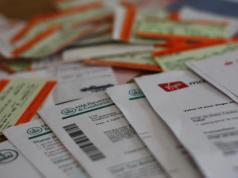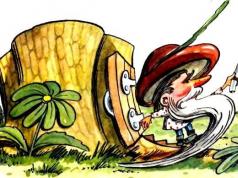Hello, friends. Today we will talk about new ad formats in Google AdSense:
- In-feed ads
- Advertisements in the article
New formats are native, which means they adapt to the design of your site. These ads aim to monetize the site by making a favorable impression on users.
They really fit harmoniously into the site design and have many settings that are easy to understand even for a beginner. Feed ads may generally look the same as on-site content, while article ads support Google's styling optimizations that are aimed at improving performance.
The emergence of new ad formats is a consequence of Google's work in the fight against low-quality ads. Only high-quality materials will be displayed in these ad units.
Benefits of In-Feed Ads
- Convenience for users. Ads in feeds make a favorable impression on resource visitors, since they are designed in the same style as the main content and look natural.
- Income from new advertising spaces. You can earn additional income from your resources by placing ads in feeds.
- In-feed ads are great for mobile devices, allowing you to generate revenue from ad impressions on any screen size.
Benefits of in-article ads
- Positive user perception. Article ads use high-quality advertising materials that look good on the site and appeal to site visitors.
- Suitable format for mobile devices. Article ads look great on small screens.
- Google Optimization. Ads in articles are optimized so that advertising effectiveness is high.
Create and configure in-feed ads
By feed we mean a list of articles on the main page in categories, archives, product catalogs, and so on. These feeds should not be confused with an RSS feed, which is also called a feed.
- Log in to your Adsense account.
- Select from the menu on the left "My announcements".
- Click the button “+New ad block”.

- Select ad unit type "Ads infide« .

- Next, select the block display type.
And start setting up the block:
- You need to determine the width of the container on the site,
- indicate the name of the block (with a reference point for convenience of statistics),
- using the tools to set the desired styles.
Placing an Advertisement in a feed on the website
For these purposes, WordPress site owners can use the plugin or use my code:
/* Feed blocks after 3,6,9 announcement on the main page */ add_action("__after_article", "adsense_fid"); function adsense_fid() ( global $wp_query; $current_post_number = $wp_query -> current_post + 1 ; //display the block just in home and if the post number is multiple of 3 if (! (is_home() && $current_post_number % 3 = = 0)) return; echo " YOUR ADVERTISING CODE"; }The code needs to be inserted into the functions.php file. Usually at the end of this file. Ad units will be displayed after 3,6,9... paragraphs.
Using the same principle, you can make blocks for categories and archives.
Creating and setting up ads in an article
This block has a minimum of settings; you just need to assign a name and make initial style settings. In the future, the system will adapt styles to improve efficiency.
To create this type of ad you need:
- Log in to your Adsense account.
- Select from the menu on the left "My announcements".
- Click the button “+New ad block”.
- Select ad unit type "Ads in article".
- Assign a name to the block and set the necessary style settings.
- Click the button "Save and get code".
Placing an Advertisement in an article on the website
To place a block in an article, you can use methods 2 and 3 from those proposed in this one or the Ad Inserter plugin, the link to which I gave above.
I used the plugin because with search best place You will have to do some more work, but with the help of a plugin this can be done much faster and more conveniently.

The block is displayed after 2 paragraphs, but if there is an image, quote or heading, the block is shifted 1 paragraph after these elements.
Video instructions on new formats of Google AdSense ad units
Friends, that's all for me today. Wish you Have a good mood And stable income on your sites.
Best regards, Maxim Zaitsev
Back to the Future, 1985. Universal Pictures.
Native, or natural, advertising (from English. native advertising) - the way in which the advertiser attracts attention to himself in the context of the site and the interests of the user. In the original, it must take into account all the features of the platform, not be identified as advertising and not cause rejection among the audience. Such advertising unobtrusively “awaits” the user where he himself is looking for interesting content. In essence, it is similar to product placement: remember how Marty McFly ran in Nike sneakers in the second part of Back to the Future.
Therefore the main advantage native advertising– this is an opportunity to “jump over” the mechanical barrier of perception (in other words, overcome “banner blindness”, if we talk about online), which does not allow users to even look in the direction of your advertising, because they are simply tired of it.
Since the 1880s, American consumer product companies have sought to attract customers through advertising campaigns. Advertisements of that time in newspapers and magazines did not shine with originality; they mainly consisted of slogans, appeals and pictures with images of goods. Agencies realized that new types of advertising were needed that would allow them to stand out from the crowd of such advertisements.
An excellent example of the native format of that time is considered to be advertising in The Furrow magazine. In the publication he owned, John Deere (founder of Deere & Company) published feature articles about agriculture and various tips for farmers. At the same time, advertising blocks with information about agricultural products produced by the Dira company were placed on the pages of the magazine. Today, Deer & Company continues the tradition by moving online.
At the beginning and middle of the 20th century, with the development of radio and television, new formats of native advertising appeared. On the radio – sponsorship of broadcasts of radio programs, sports matches with the addition of advertising blocks on air. A striking example native advertising on television was the broadcast of advertisements for Procter & Gamble products in series that were broadcast during the day and later became known as “soap operas.”
With the advent of the Internet, the world has turned upside down. Native advertising has evolved into search ads that directly connect businesses with target customers on search engines. With the arrival of digital media companies (for example, BuzzFeed) on the market, the world of native advertising has turned upside down once again. Such sites almost immediately refused to place banner advertising and placed their main emphasis on sponsored viral content, which helps partner brands convey information about their products to the target audience in an unobtrusive form.
The definition of “native advertising” in the modern digital context was first voiced by Fred Wilson at the Online Media, Marketing, and Advertising Conference in 2011. Traditional news sources - The New York Times, The Wall Street Journal, The Washington Post - eagerly picked up the new trend.
Interestingly, in most cases, publishers claim that they tag native ads, immediately letting the reader know what they are dealing with. However, a study published in June 2015 by Advertising Age found that the most user-friendly and logical in this case the mark “advertisement” is usually not used. Instead, articles are appended with “sponsored,” “promoted,” or “presented by.”
The IAB Native Advertising Playbook identifies six major interactive formats currently used in native advertising:
- paid content that is displayed in the news feed - for example, on Facebook or Instagram;
- advertising in search engines;
- blocks of content recommendations;
- advertisements (direct advertising of goods and services);
- standard IAB advertising with native elements;
- other formats that cannot be included in previous groups and are developed for each specific case separately.
When posted on open platforms, the content is promoted along with the platform, with its assistance, and is not published anywhere else. Examples: Twitter Promoted Tweets, Facebook Sponsored Stories, TrueView Ads, and other YouTube video ads.
Open platforms are different in that the same social media and on the same platforms contain branded content and advertising messages, the source of which is not the platform, but a third-party resource from which the advertising is broadcast.
Let's look at a fairly new (appeared on July 5, 2017) advertising from AdSense - blocks of native advertising in the feed (In-Feed) and in the article (In-Article).
Native advertising is usually more harmoniously integrated into the content and is not striking like standard banners, so, in theory, it has a higher click-through rate (CTR) and, as a result, can increase your income.
We will see whether it will increase income or not, all this needs to be tested, so now I have built one such new advertising block into the middle of each article, and also added the old regular AdSense banner above and below. Let's see which banners will show themselves better, although perhaps the ideal option would be a combination of different formats.
- Provides increased comfort and user experience by using modern elements such as high-resolution images, longer titles, etc.;
- Improved integration with different sizes screens, including mobile and tablet views. Advertising design adapts to the design of your website;
- Easy to use.
New native In-feed ads (in the feed) available to all publishers. They can be placed in lists (sheets) of your articles, products or other items.
Save your HTML template.
Find "
If a given code appears twice, we need the second one.
Replace this code with this script:
The script does not contain any links to third-party sites, I installed it myself and it works.








